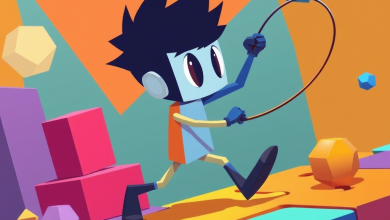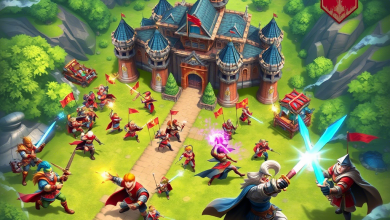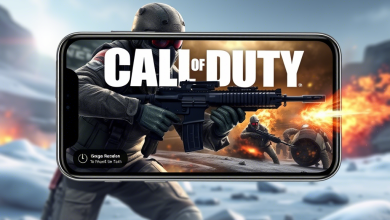
Beyond a Steel Sky: A Triumphant Return to Union City
In the world of adventure gaming, few titles have enjoyed the cult status of Beneath a Steel Sky. Released in 1994, the cyberpunk point-and-click adventure captivated players with its dystopian world and compelling story. Fast forward to 2020, and Revolution Software finally delivered what fans had been waiting for: Beyond a Steel Sky, a sequel that not only honors its predecessor but stands tall as an impressive game in its own right. Now, let’s dive deep into this modern adventure that breathes new life into a beloved franchise.
The Long-Awaited Return to Union City
When Beyond a Steel Sky was announced, veteran gamers who experienced the original title in the mid-90s collectively held their breath. Would this new entry capture the magic that made the first game special? The answer is a resounding yes.
Set ten years after the events of Beneath a Steel Sky, the sequel reunites players with Robert Foster, the protagonist from the original game. After a child is kidnapped from his desert community, Foster follows the trail back to Union City – the sprawling metropolis he helped liberate a decade earlier. What he discovers is a seemingly utopian society that harbors dark secrets beneath its gleaming surface.
Revolution Software, led by industry veteran Charles Cecil, has created a game that respects its roots while embracing modern gaming conventions. The studio’s commitment to storytelling excellence remains steadfast, ensuring that both newcomers and longtime fans can fully appreciate this cyberpunk adventure.
Stunning Visuals and Art Direction
One of the most striking aspects of Beyond a Steel Sky is its visual presentation. The game adopts a cel-shaded art style that gives Union City a distinctive comic book aesthetic – a fitting choice considering the original game came with a comic book prologue illustrated by Watchmen artist Dave Gibbons, who returned for this sequel.
The neon-soaked streets and towering skyscrapers of Union City create a beautiful yet unsettling environment. Every district has its own visual identity, from the pristine upper levels reserved for privileged citizens to the industrial underbelly where the city’s automated systems operate. This visual diversity not only serves the narrative but also keeps exploration fresh and exciting.
Character designs are equally impressive, with each citizen of Union City displaying unique personalities through both their appearance and animations. The attention to detail extends to the environment, with digital advertisements and robotic assistants populating the cityscape, reinforcing the game’s themes of technological dependence and surveillance.
A World Brought to Life Through Sound
The audio design in Beyond a Steel Sky deserves special mention. The ambient sounds of Union City – from the gentle hum of hovering vehicles to the distant chatter of AI announcements – create an immersive atmosphere that pulls players deeper into this fictional world.
Voice acting is uniformly excellent, with each character delivering their lines with appropriate emotion and nuance. The script’s occasional humor lands well thanks to the skilled performances, providing necessary relief from the game’s more serious themes.
The musical score complements the action perfectly, swelling during dramatic moments and receding to subtle electronic beats during exploration. It’s a soundtrack that acknowledges the game’s cyberpunk roots while establishing its own identity.
Innovative Gameplay Mechanics
Beyond a Steel Sky represents a significant evolution from its point-and-click predecessor. The game adopts a third-person perspective, allowing players to explore Union City in three dimensions, which provides a greater sense of scale and immersion than the original’s 2D environments.
The core puzzle-solving gameplay remains, but with modern sensibilities. The most innovative feature is the hacking tool that allows Foster to rewire the functionality of various devices throughout the city. This “scan and hack” mechanic presents multiple solutions to puzzles, giving players agency in how they approach obstacles.
The Hacking System: A Game-Changer
The hacking system deserves deeper examination because it fundamentally changes how players interact with the game world. Rather than simply collecting items and using them in specific places (though traditional inventory puzzles still exist), Foster can alter the behavior of Union City’s ubiquitous technology.
For example, a security scanner blocking your path can be hacked to identify you as an authorized person, or you might rewire a cleaning robot to perform a different function entirely. This system creates layered puzzles that feel organic to the world and consistent with the narrative themes of technological manipulation.
What makes this system particularly successful is that it rarely feels arbitrary. The logic behind the puzzles generally makes sense within the game’s established rules, avoiding the frustration that often plagues adventure games when solutions seem to exist only in the designer’s mind.
A Narrative That Asks Big Questions
Beyond a Steel Sky doesn’t shy away from exploring complex themes. The game examines the nature of artificial intelligence, questions the value of a society built on algorithmic control, and considers the ethics of utilitarianism versus individual freedom.
Union City appears to be a perfect society on the surface – crime is virtually non-existent, citizens are provided for, and AI systems ensure everything runs smoothly. Yet as Foster delves deeper, he uncovers the cost of this manufactured paradise. The game doesn’t offer easy answers, instead inviting players to consider the implications of a world where an AI determines what’s best for humanity.
The narrative also explores Foster’s personal responsibility, as the AI running Union City – his old companion Joey – was installed at his behest at the conclusion of the original game. This connection creates emotional stakes beyond the immediate mystery of the kidnapped child.
Character Development and World-Building
The world of Beyond a Steel Sky feels lived-in and authentic, populated by characters with their own motivations and histories. Citizens have varying opinions about their society, from those who embrace the comfort and security it provides to others who chafe under its restrictive systems.
Secondary characters are well-developed, avoiding the trap of serving merely as quest-givers or information dispensers. Their personal stories intersect with the main narrative in meaningful ways, enriching the overall experience and providing context for the city’s social structure.
Conclusion: A Worthy Successor
Beyond a Steel Sky accomplishes what many long-delayed sequels fail to achieve: it honors its predecessor while confidently establishing its own identity. The game successfully translates the essence of Beneath a Steel Sky – its dystopian setting, dark humor, and social commentary – into a modern gaming experience.
With its combination of engaging gameplay, thought-provoking narrative, and striking visual design, Beyond a Steel Sky stands as one of the most accomplished adventure games in recent years. Both newcomers to the series and those who waited patiently for two decades will find a rich, rewarding experience in this return to Union City.
For adventure game enthusiasts or those interested in narratives that explore the implications of technology on society, Beyond a Steel Sky offers an experience that resonates long after the credits roll. It’s not just a nostalgic trip down memory lane – it’s a journey worth taking on its own considerable merits.




